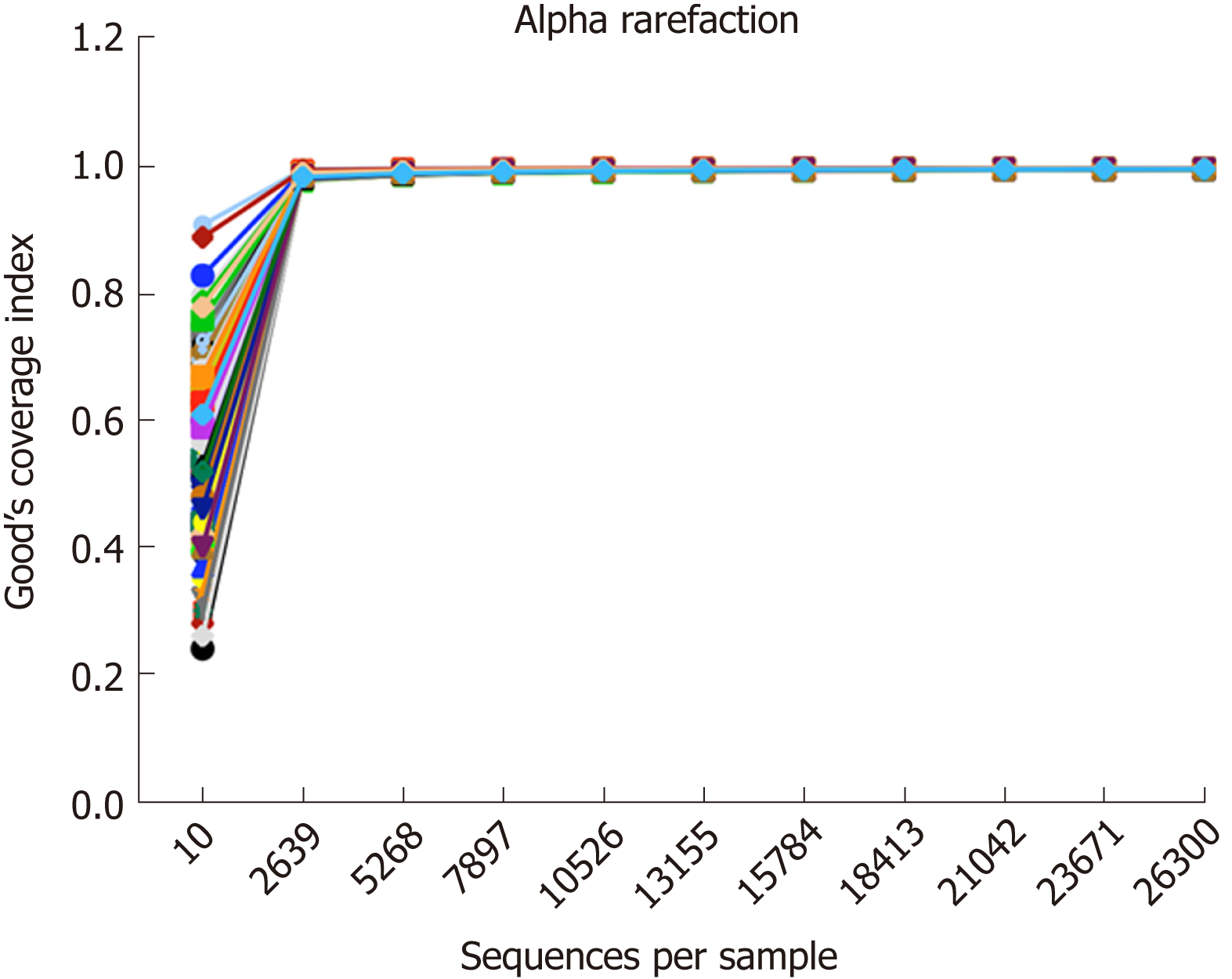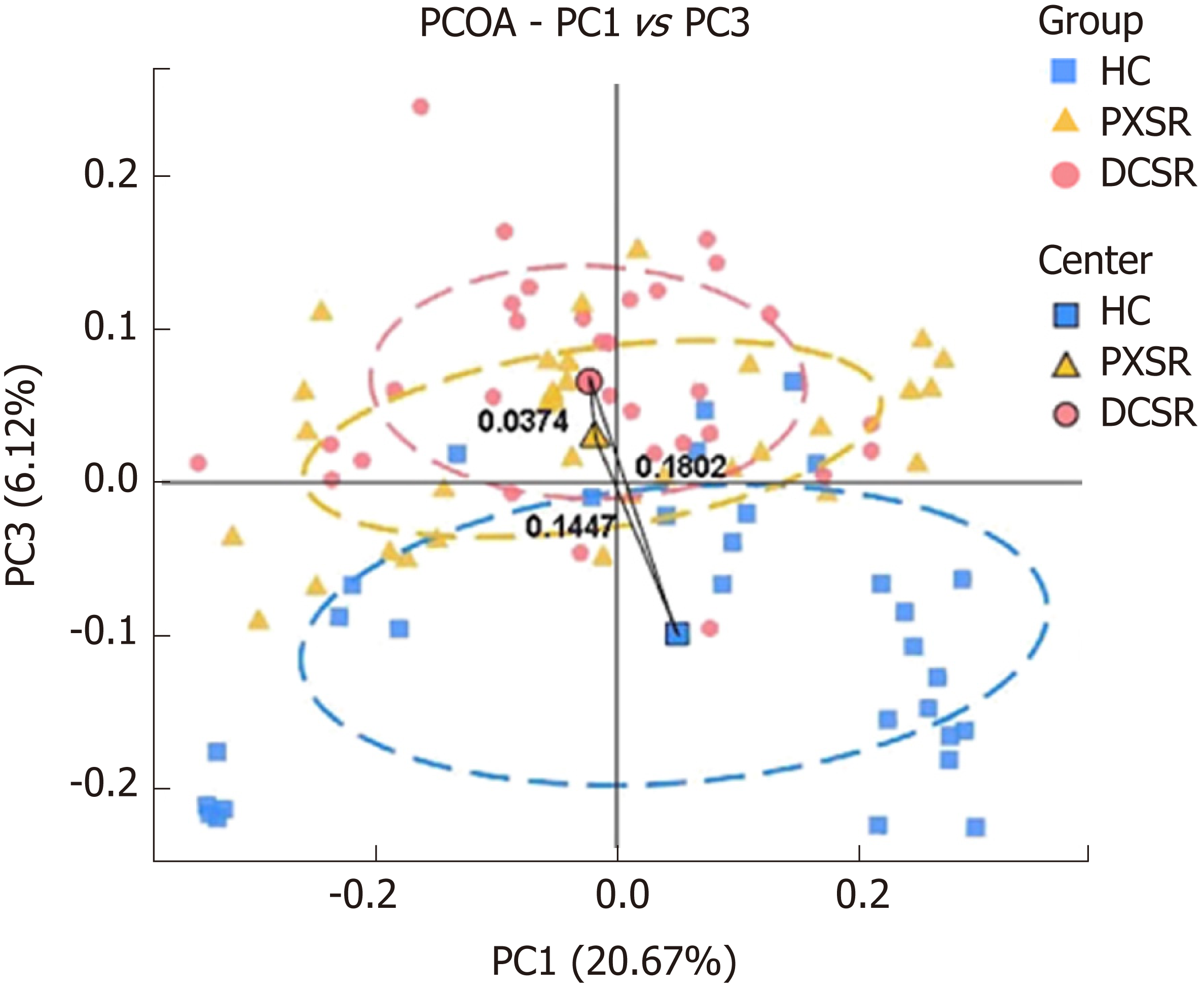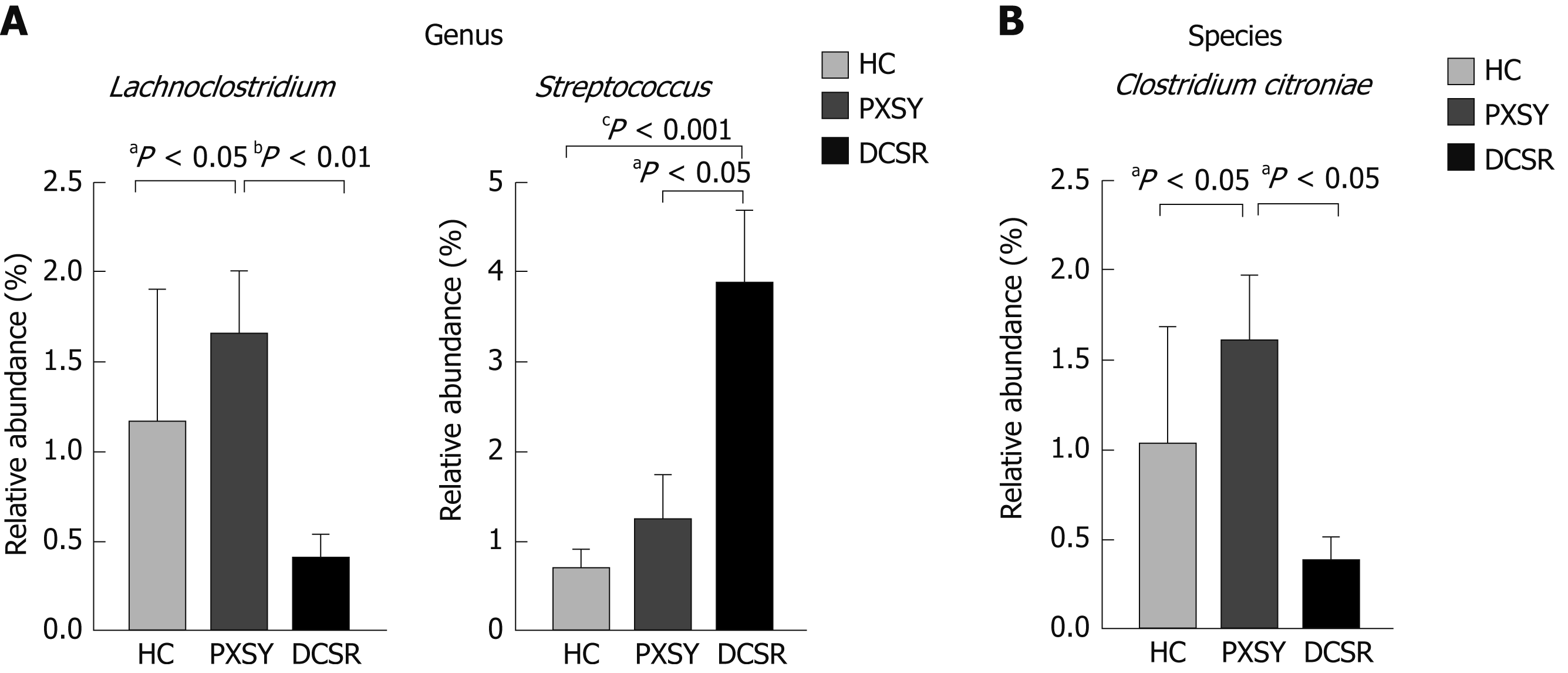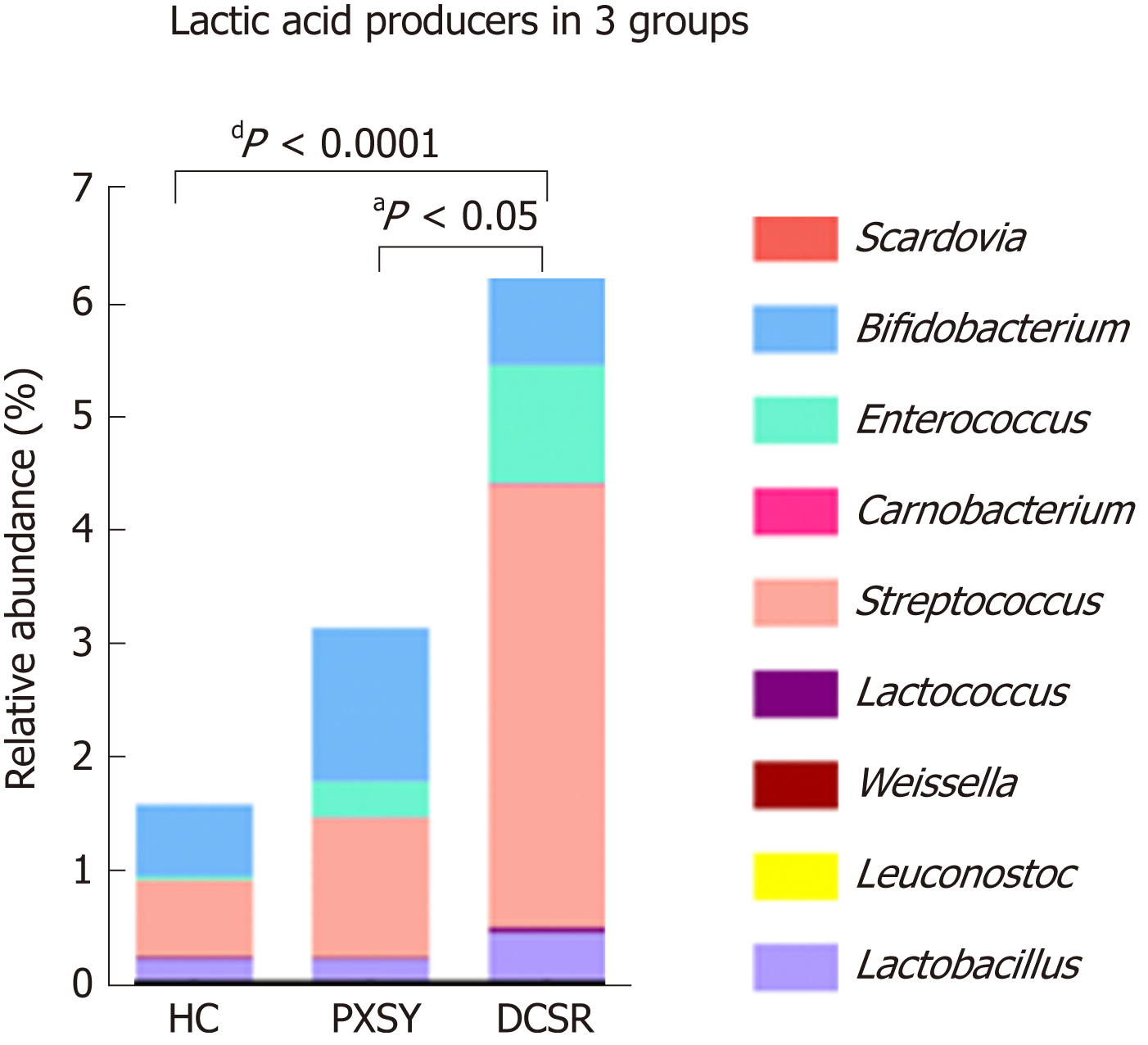Copyright
©The Author(s) 2019.
World J Gastroenterol. Jul 7, 2019; 25(25): 3242-3255
Published online Jul 7, 2019. doi: 10.3748/wjg.v25.i25.3242
Published online Jul 7, 2019. doi: 10.3748/wjg.v25.i25.3242
Figure 1 Rarefaction curves of all samples.
The rarefaction curve of each sample reached a plateau when approximately 2700 sequences per sample were extracted, and Good’s coverage estimator for each group approached 100% (> 98.9%).
Figure 2 Principal coordinate analysis plot of the community structure in healthy controls, patients with Pi-Xu-Shi-Yun syndrome, and those with Da-Chang-Shi-Re syndrome.
The majority of samples clustered by health status at the PC1 vs PC3 plot, indicating that health status was a major effect factor for the phylogenetic composition of these samples. Exceptions from all the three study groups were observed, reflecting the effect of other genetic and environmental factors on these microbiomes. PCOA: Principal coordinate analysis; HC: Healthy controls; DCSR: Da-Chang-Shi-Re syndrome; PXSY: Pi-Xu-Shi-Yun syndrome.
Figure 3 Differential taxa between Pi-Xu-Shi-Yun syndrome and Da-Chang-Shi-Re syndrome cohorts at the genus and species levels.
A: Differential genera; B: Differential species. Lachnoclostridium is more abundant in Pi-Xu-Shi-Yun (PXSY) syndrome. Lachnoclostridium is more abundant in PXSY syndrome than in the shire group and healthy controls; the species of Lachnoclostridium named Clostridium citroniae also showed the same tendency. Streptococcus was more abundant in Da-Chang-Shi-Re patients than in PXSY and healthy controls. Relative abundance values are the mean ± SE (adjusted aP < 0.05; adjusted bP < 0.01; adjusted cP < 0.001). HC: Healthy controls; DCSR: Da-Chang-Shi-Re syndrome; PXSY: Pi-Xu-Shi-Yun syndrome.
Figure 4 Lactic acid producers in the gut.
Lactic acid bacteria were more abundant in ulcerative colitis patients, especially in the Da-Chang-Shi-Re (DCSR) group, than in healthy controls, suggesting that there might be more lactic acid in the guts of DCSR patients than in those of Pi-Xu-Shi-Yun patients. HC: Healthy controls; DCSR: Da-Chang-Shi-Re syndrome; PXSY: Pi-Xu-Shi-Yun syndrome.
Figure 5 Functional pathways of gut microbiomes in the Pi-Xu-Shi-Yun and Da-Chang-Shi-Re groups.
Microbial functions were predicted and categorized into KEGG pathways using Phylogenetic Investigation of Communities by Reconstruction of Unobserved States. Linear discriminant analysis effect size was carried out to detect inner function differentials among groups. Significantly differential functions between Pi-Xu-Shi-Yun syndrome (yellow) and Da-Chang-Shi-Re syndrome (pink) are shown (LDA score > 2.0). DCSR: Da-Chang-Shi-Re syndrome; PXSY: Pi-Xu-Shi-Yun syndrome.
Figure 6 The probable contribution of the gut microbiota to the pathological mechanism of Da-Chang-Shi-Re and Pi-Xu-Shi-Yun syndromes.
Da-Chang-Shi-Re and Pi-Xu-Shi-Yun syndromes might have different pathological mechanisms, which are based on the differential microbiota between these two syndromes. UC: Ulcerative colitis; DCSR: Da-Chang-Shi-Re syndrome; PXSY: Pi-Xu-Shi-Yun syndrome; RLR: RIG-I-like receptor.
- Citation: Zhang YL, Cai LT, Qi JY, Lin YZ, Dai YC, Jiao N, Chen YL, Zheng L, Wang BB, Zhu LX, Tang ZP, Zhu RX. Gut microbiota contributes to the distinction between two traditional Chinese medicine syndromes of ulcerative colitis. World J Gastroenterol 2019; 25(25): 3242-3255
- URL: https://www.wjgnet.com/1007-9327/full/v25/i25/3242.htm
- DOI: https://dx.doi.org/10.3748/wjg.v25.i25.3242














